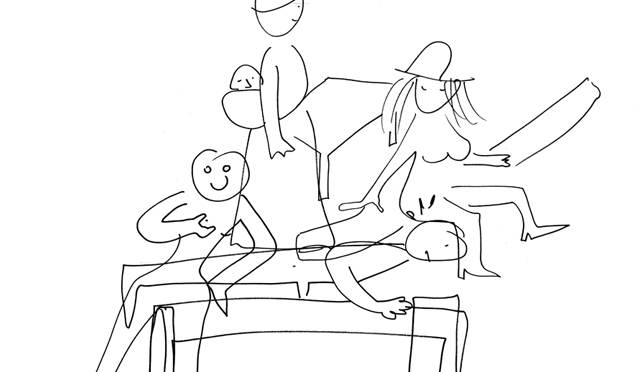Search
To search for an exact match, type the word or phrase you want in quotation marks.
A*DESK has been offering since 2002 contents about criticism and contemporary art. A*DESK has become consolidated thanks to all those who have believed in the project, all those who have followed us, debating, participating and collaborating. Many people have collaborated with A*DESK, and continue to do so. Their efforts, knowledge and belief in the project are what make it grow internationally. At A*DESK we have also generated work for over one hundred professionals in culture, from small collaborations with reviews and classes, to more prolonged and intense collaborations.
At A*DESK we believe in the need for free and universal access to culture and knowledge. We want to carry on being independent, remaining open to more ideas and opinions. If you believe in A*DESK, we need your backing to be able to continue. You can now participate in the project by supporting it. You can choose how much you want to contribute to the project.
You can decide how much you want to bring to the project.
March has been a very sonorous month. We highlight as the most impertinent noise, that of interference. An interference stemming from the din of certain upholding structures in a public museum that resonate with censorship. The stridency originates in certain offices, where decisions are taken without any consideration of the development of a project with an argument, for which codes are needed based on transparency and liberty. We’re still stunned by the nonsense that has taken place within the (stagnant, for what can be seen) confines of MACBA. And from the other extreme of the bureaucratic paradigm, the communiqué from Zemos98 announcing the news that this year will be its, last leaves us saddened. And in silence. The sensation of being pounded by cultural politics – state or regional, public or private, institutional or independent- that lurches along, is once again, deafening. But despite all this, with the five articles programmed about and within the debate-or verification- of the close ties between sound and visual art, music and image, that have tackled the subject from different angles and formats; along with two “extra” texts, March has been an intense month.
Glòria Guso inaugurated the month with an interview with Richard Mèmeteau, in which they discussed the relations between music (pop) and contemporary art, about strategies of influence, relations, links or dependencies, amongst many other things. Sonia Fernández Pan opened the second week with a text in which she invited us to ask ourselves about the viability of asking questions through essentially different codes, about the need (or pertinence) of ambits; in short, about “how to listen through discourse without subordinating sound to this very discourse”. They were followed by a critique by Daniela Hermosilla, dfrom Berlin, in which she appealed to the capacity for radio as a discourse in itself, stringing together an article that informed us on the one hand about radio art, its origins and evolution, and on the other, the project Zonoff, located in the German capital, with its artistic practices and ways of doing things, that are almost political declarations in themselves. Ángel Calvo Ulloa wrote a critique of the exhibition “Punk. Its traces in contemporary art”, curated by David G. Torres in the CA2M, high fidelity and full of attitude. What’s more we asked David Armengol to carry out a tour of his record intimacy and he regaled us with a stroll between folk art and contemporary art with a lot of rhythm. And as “bonus tracks”, Cecilia Martin signed a text about silence, or those sounds that nobody hears but which are there, from the festival Sonic Acts, in Holland; and ; and Andrea Diaz Mattei wrote about Robert Cahen his landscapes and mundane sounds.
Interview by Glòria Guso with Richard Mèmeteau: Jay-Z wins against Marina Abramovic
How to listen through discourse?, by Sonia Fernández Pan
May contain traces of… Angel Calvo Ulloa about “Punk: It’s traces in contemporary art”
Back to the discourse of sound: the capacity of radio, by Daniela Hermosilla
Bard Attitude: Folk music and contemporary art, by David Armengol
The sound nobody hears, by Cecilia Martin
Landscapes and mundane sounds. In relation to Robert Cahen, by Andrea Díaz Mattei

A*DESK is a critical platform focused on publishing, training, experimentation, communication and dissemination in relation to contemporary culture and art, which is defined by transversality. The starting point is contemporary art, because that is where we come from and this awareness allows us to go much further, to incorporate other disciplines and forms of thought in order debate issues that are relevant and urgent for understanding our present.
"A desk is a dangerous place from which to watch the world" (John Le Carré)